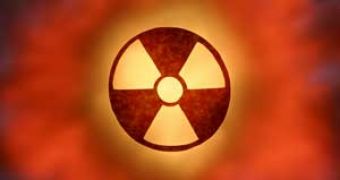Dirty bombs are radiological weapons that combine radioactive material with conventional explosives.
These weapons have been watched for decades, but their imminent threat rose with the current Islamic terrorist menace.
Many fear that terrorists unable to achieve a nuclear weapon could build explosive devices filled with radioactive material, much easier to steal from a medical or industrial machinery.
Of course, a dirty bomb cannot be compared with a real atomic bomb, but can still inflict panic and spread lethal radioactive material over potentially large zones.
But a new set of explosive researches found that the dirty bombs are in fact much less harmful to fire fighters or police officers than long thought.
Physicist Fred Harper and his team at Sandia National Laboratory in Albuquerque, New Mexico, assessed the behavior of radioactive materials during an explosion while in another experiments, Harper and Canadian researchers effectively exploded dirty bombs, thought to resemble those built by terrorists, a few meters off the ground.
The experiments proved the most radioactive fragments of the bombs, dangerous for human life, travel less far than previously thought.
Experiments imitating urban ground environments like sand, dirt, and concrete revealed that dirt or grit from the area induced the formation of larger fragments during the explosion, fragments that move on even shorter distances.
These results are good news for the first people reaching an explosion place, like police and fire fighters.
"They shouldn't need to wear full radioactive suits or air tanks, because the size and type of fragments that would be produced by likely weapons wouldn't warrant that kind of protection, ending up mostly on the ground rather than in the air." said Harper.
"Until Fred made this data available, people were using assumptions," said Steve Musolino, a health physicist at Brookhaven National Laboratory in Upton, New York.
Researchers still have to measure the long-term risks of the radiation induced by dirty bombs.
"Findings could have implications for the arduous task of cleanup. Even from a small device, that process could take months or years in a city as officials struggle to find radioactive particles that went airborne after the blast," said Musolino.

 14 DAY TRIAL //
14 DAY TRIAL //